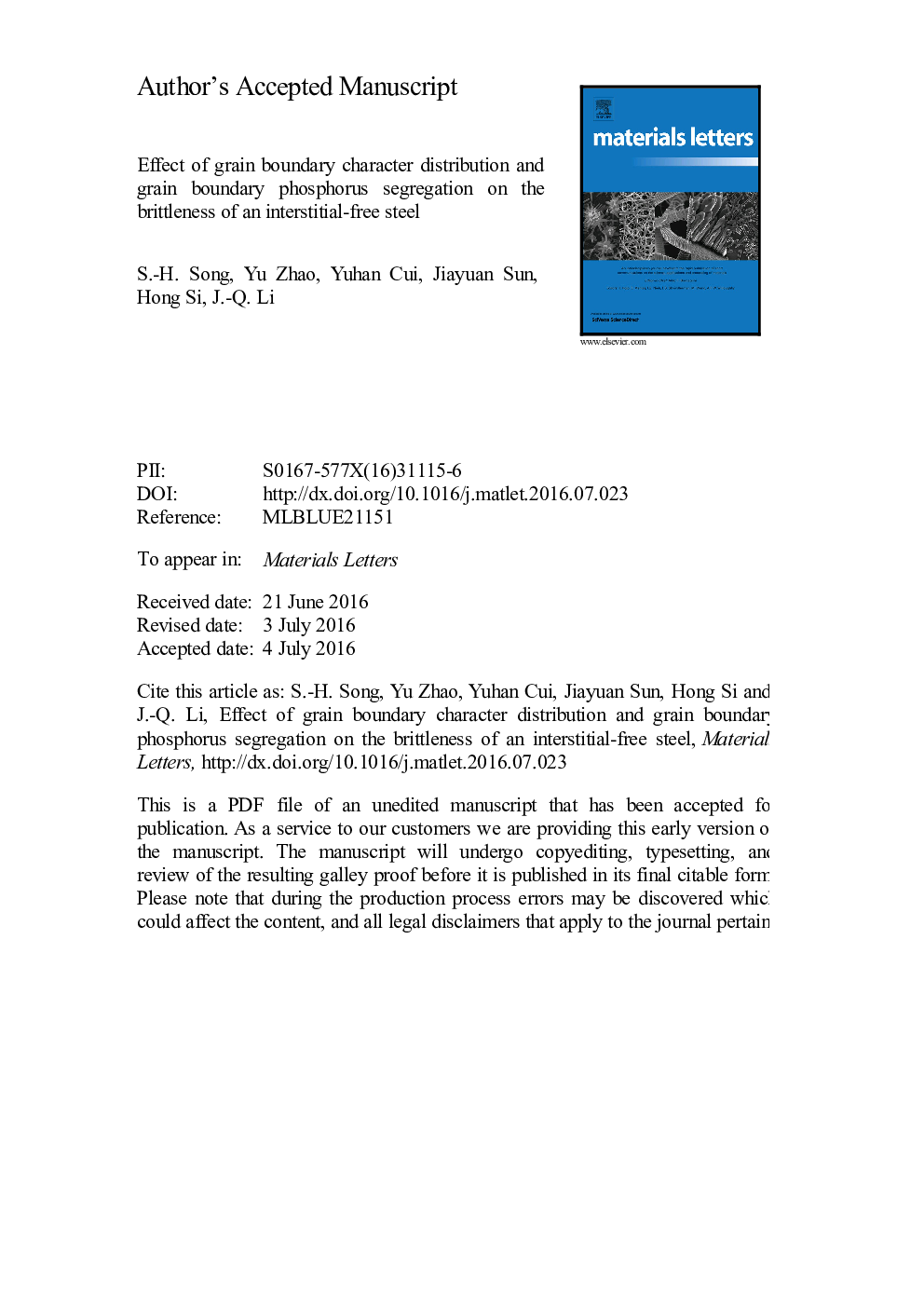| Article ID | Journal | Published Year | Pages | File Type |
|---|---|---|---|---|
| 8016411 | Materials Letters | 2016 | 11 Pages |
Abstract
Grain boundary character distribution and grain boundary P segregation in an interstitial-free steel annealed for up to 4 h at 700 °C after cold rolling are investigated using electron backscatter diffraction and Auger electron spectroscopy. During annealing, the recrystallized grain size and hardness of the steel do not change apparently, being ~10 µm and 90HV, respectively, but the number percentage of random high-angle grain boundaries initially increases with increasing annealing time until reaching a maximum at 3 h and then decreases slightly after that. The random high-angle grain boundaries play an important role in the steel embrittlement. Both P grain boundary segregation and ductile-to-brittle transition temperature (DBTT) of the steel increase in the same trend with increasing number percentage of random high-angle grain boundaries. The relationship between DBTT and P boundary concentration (Cp) is linear, being expressed as DBTT(°C)=3.12CPâ118.87 (Cp, at%), showing that the annealing treatment of cold-rolled interstitial-free steel should be precisely designed to avoid embrittlement.
Related Topics
Physical Sciences and Engineering
Materials Science
Nanotechnology
Authors
S.-H. Song, Yu Zhao, Yuhan Cui, Jiayuan Sun, Hong Si, J.-Q. Li,
